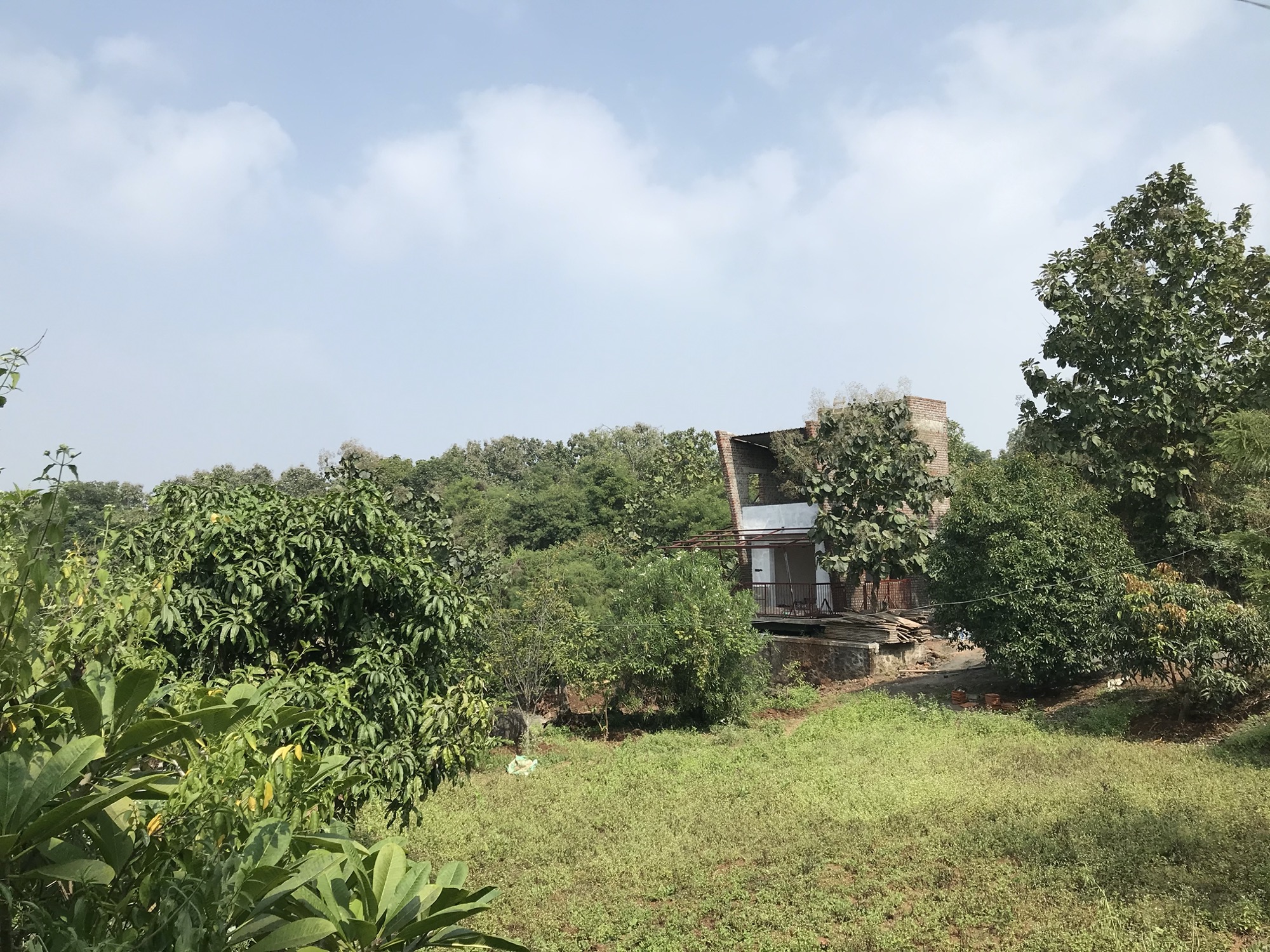 The half-acre contoured site is a quiet and breezy place with an ancient fort towering on one side and views of farms and deciduous foliage on other sides. A stream runs along the north boundary of the site. Our client grows vegetables and local fruit trees on this little piece of land. This small house is designed for him to spend time with family and friends on weekends.
The half-acre contoured site is a quiet and breezy place with an ancient fort towering on one side and views of farms and deciduous foliage on other sides. A stream runs along the north boundary of the site. Our client grows vegetables and local fruit trees on this little piece of land. This small house is designed for him to spend time with family and friends on weekends.
The brief was simple- Create a living space for a small family or for a larger gathering for all age groups of people. We added to the program a semi open deck and a covered terrace which ensured good use of the house during torrential rains as well as hot summers.
There existed a retaining wall on site and a beautiful teak tree. We located the house to tightly fit in the corner beyond the teak tree such that the foreground towards the house is maximised. The deck gets a clear view of the surrounds. The corbelled load-bearing brick walls allow for a larger cover on the upper terrace. Openings frame the view of Sinhgad fort which is a beautiful historical landmark. The terrace was also planned to be staggered such that it can be enclosed in the future to create a second space with its own toilet. However small a project, the service requirements are always important, for which we provided a service slab which carried the water tanks and solar PV provisions. The roof floats between the parallel walls thus keeping the east west vista open for sweeping wind.
Building materials:
The foundation was built in plum concrete and RCC. The superstructure was built in locally available red brick. An RCC slab was simply supported on the parallel load-bearing walls. The roof structure was made in MS tube sections and corrugated GI sheet. Teracotta clay tiles were used for the internal flooring, Shahbad stone was used for the deck floor and Kadappa stone was used as staircase treads. Doors and windows were made in powder coated GI sections. External weather shades were made with cement fibre sheet.
For a project that’s thirty kilometres outside the city, the cost of construction usually goes up mainly due to materials transport and labour costs. With this in mind, we kept the design for this residence simple and stacked with the floating deck supported by two columns only. This reduced the foundation and excavation volume itself. The primary building materials – Brick and stone were sourced from local quarries and kilns. The upper floor is a simple semi covered terrace space and the openings also did not require any windows or chajjas. The main walls were purposely left un-plastered from outside to avoid additional material and cost of plaster and paint. All the joints were finished with cement pointing instead to make the walls non porous and clean. This helped keep the cost of civil work low. Simple and easy to maintain finishing material like rough Shahbad, rough kadappa stone, terracotta tiles and grey granite for door frames and window cills were used. Client’s old granite kitchen counter top from their old house was also reused in the pantry. All these strategies helped in the finishing costs in check without compromising on the quality of space and construction. The total per sq.ft. cost of construction for this entire project came to Rs. 1,750/- per sq. ft.
The colour of the stone and brick of this residence ensures that it merges well with the surrounding natural landscape and allows nature to take the centre stage.
Project Facts
Built area: 100 sq m
Project location: Khanapur, Maharashtra – India
Lead Architects: Pooja Chaphalkar and Meghana Kulkarni
Photography: Pooja Chaphalkar and Meghana Kulkarni
Additional Credits:
Design team: Sanjay Jadhav, Sanjushree Kose, Tauseef Hasan
Contractor: Mr. Kedar Deokule
Budget: ₹ 17,50,000/-






















